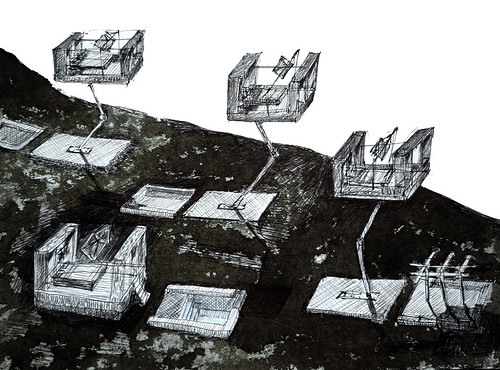the crane room conflict

Many people hate the crane room project. Ethel Baraona Pohl announced it in ArchDaily. It was also published in Phat City, Mippin, damonj.spaces, insidefeeders, bbs.fuyiplaza, archimag, arch.m6699, boiteaoutils, arhinovosti, ilikethisart.
The crane room project is proposed through a double strategy concerning the reuse of crane mechanisms.
The first element of this strategy follows the rationale of moving rooms: the bus hotel, the keg apartment, the floating room are part of a vast research about a nomadic housing, reinterpreting existing old vehicles or mechanical particles of a recent past.
The second element proposes an installation of the crane mechanisms. The installation challenges the idea of another narration : it has to do with the apocalyptic mythology of the end of water. A desalination unit is the only technology needed to create sweet water out of the sea. The crane rooms are proposed here as forming a possible complex by the main source of the future's water; in the same time the complex of founded crane rooms allows the preservation of the individual shell and the creation of a landscape out of it. The project is also proposed as a comment about the Internet society, depicting in an landscape project something strangely familiar: a concrete image of this abstract social condition that humanity experiences for the first time in its history: the crane rooms landscape is a well known image. We live in such a landscape even if this same landscape seems so exotic; inhabiting a hypnotic "control panel - cell" the inhabitant of the globe can also be conceived as an inhabitant of a small restricted universe. Through this conception of a distorted social constitution, the crane room ensemble is related to older projects such as the no wall house, the open air housing, the night shelters, the concrete beds or the RealFake house 2.
In these design works, designing is less important than the architecture of the narrative construction; the reuse of existing structures is usually important. An archeology of existing elementary technology and the reinterpretation of it in unexpected ways are crucial within the design process. Designing in some of the examples is a curatorial project that orchestrates existing things.





No comments:
Post a Comment